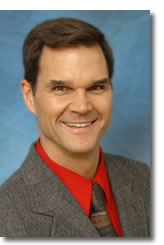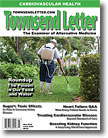Page 1, 2, 3
Cortisol
Cortisol reflects one of the most destructive forces in our physiology when it is not kept in balance. The nature of modern life is wrought with overcommitments on our time and resources, leaving us exposed to high risk for HPA axis dysfunction and the unhealthful rise in cortisol. If we truly want to expose the cause of heart disease, it is critical to assess and modulate the action of cortisol. Many of us cheat our sleep, exercise, and diet, all in the name of, "I don't have time!" The Caerphilly study looked at the simple ratio of cortisol to testosterone and how it related to CHD. The answer was clear to see that as cortisol rose higher, leading to suppression of testosterone, this shift in ratio easily predicted those at increasing risk for a vascular event, specifically CHD.44
Sustained elevation in cortisol will have the following negative impact:
- Blood glucose regulation leading to insulin resistance and diabetes
- Poor conversion of levothyroxine into its active liothyronine form
- Drop in testosterone and dihydrotestosterone
- Reduced levels of adiponectin further driving insulin resistance
- Elevation in IL1, IL-6, and TNF-alpha, thus CRP
- Loss of muscle and bone mass
- Gut disturbance, dysbiosis, and immune dysregulation
Meditation and Heart Rate Variability Training Reduce Risk
Heart rate variability is a normal beat to beat variation that reflects the health and balance of the sympathetic:parasympathetic nervous system. Physiologic stress adversely affects this, leading to direct increased risk for hypertension and heart disease. The use of heart rate variability training (emWave) has been shown to be extremely powerful in restoring balance. In a study comparing its use with drug therapy, the group using this relaxation technique experienced a significantly greater drop in systolic blood pressure.45
In a study employing meditation, subjects were asked to meditate daily for just 13 minutes, and cortisol was tracked over a 3-month time frame. There was a consistent reduction in overall cortisol expression of 28% over time.46 This reduction in cortisol is critical to proper sleep and weight management, both factors for the reduction of CHD. Chronic stress leads to feeling of fatigue, drop in energy, and increased irritability and hostility, and these emotions have been linked to the development of insulin resistance.47
Hormones
The hormones estradiol and testosterone have dozens of roles to play in our normal physiology. Both affect blood sugar and cholesterol metabolism. Abnormally low levels of testosterone or estradiol will increase risk for diabetes, vascular inflammation, and CHD.48-54 Restoring low testosterone to normal levels aids in the reversal of type 2 diabetes and metabolic syndrome. CHD occurrence in menopausal women drops 40% to 50% with the use of bioidentical estrogen.
Administration of testosterone to men with high CRP and low testosterone will in fact reduce CRP. There is a consistent inverse relationship between testosterone levels and CRP.55 Low testosterone states are predictive of diabetes, and normalization of testosterone levels is therapeutic in the reversal of diabetes as it affects the mitochondrial restoration of ATP production.56-62
Sleep and Sleep Apnea
Sleep is key for recovery from daily oxidative stresses that are normal wear and tear. Poor sleep quality that lacks slow wave sleep or a short sleep cycle is directly linked to predictable rise in ghrelin, a drop in leptin, and a rising BMI.63 The average night's sleep in Americans has shrunk from an average of 8 to 9 hours back in 1970 to an average of 6 hours as of 2004.
After just 2 nights of fragmented sleep, insulin sensitivity is reduced and craving patterns for high-glycemic foods rise dramatically.64 General calorie intake rises and exercise is reduced following fragmented sleep. This combination will obviously lead to weight gain, and all the elements of inflammatory chemistry are in place to drive CHD.65
Obstructive sleep apnea (OSA) is associated with considerable morbidity and mortality and is directly linked to CHD, hypertension, and diabetes.66 OSA results in fatigue, loss of quality of life, weight gain, and obesity. First-line therapy includes CPAP (continuous positive airway pressure), but compliance is poor. The reality is that treatment of obesity and weight gain through diet and lifestyle will greatly affect both risk for OSA and severity of OSA. Using a simple Epworth score to identify those at risk is a great start. Be suspicious of any patient who reports snoring. Have a low threshold for ordering sleep studies and assessment for CPAP. If CPAP is unacceptable to the patient, then refer them to a local dentist familiar with the construction and use of dental appliances to help position the jaw and tongue in a more anterior position out of the airway. If unfamiliar with these approaches, then contact the American Academy of Dental Sleep Medicine (AADSM) for a clinician in your area. Be very cautious to never use sedation in an effort to improve sleep if the patient has risk for apnea.
Conclusion
Coronary artery disease involves a complex web of factors and physiology, but when we step back and assess the common pathways, it's easy to see that we have left the lifestyle of the 1920s. We don't eat food anymore; we consume foodlike substrates that come from factories, not fields. The things that do come from fields are often genetically manipulated and dangerous. Instead of talking on the back porch, we text, tweet, e-mail, Instagram, and Facebook all day every day. Look around you – no one is looking back because everyone's noses are buried in screens in their hands.
We don't exercise our bodies, we don't walk, and we don't stretch. We sit in soft seats and expand. We have lost our way. We are anxious and overcommitted and we surely don't sleep anymore.
The human condition needs a few simple things to thrive. Clean food and water. Good sleep. A little exercise or simple movement. A normal cortisol level reflective of a calm existence where stress is "managed" or at least balanced with meditation and exercise. If we are to claim victory as true "health"-care providers, then we must find a way to drive healthful lifestyle into our patients. We must become the leaders in educating our communities in healthful lifestyle choices. We have fabulous resources at our disposal, as the Internet is bursting with tools that are user friendly.
We need to offer options to our patients that can weave into the fabric of their current lives but, more importantly, help them see the damage that they are creating if their lives are destructive. To simply offer drug therapy as the totality of our solution is akin to fastening a seatbelt on our patients as they race at 100 mph toward a brick wall. It may reduce the damage, but it's not going to stop the crash. We need instead to step inside the vehicle and apply the brake.
As physicians, we have tremendous influence on what our patients think, believe, and do. We need to expand our powers of persuasion to include lifestyle.
References (.pdf)
Page 1, 2, 3
 Dr. Gary Huber is president of the LaValle Metabolic Institute. He spent 20 years as an emergency medicine physician before joining Jim LaValle in the practice of integrative medicine at LMI. Dr. Huber is an adjunct professor teaching integrative medicine practice at the University of Cincinnati College of Pharmacy as well as a clinical preceptor for pharmacy students. Dr. Huber also lectures on hormone replacement therapies and integrative care for the American Academy of Anti-Aging Medicine for the University of South Florida. He has developed the Metabolic Code Professional Weight Loss Program that has proved very beneficial in reversing metabolic syndrome issues. Dr. Huber has a long-held interest in nutrition and human physiology as they relate to wellness and longevity. He has served as medical director for the Flying Pig Marathon and is presently on the board of directors for Loveland's Amazing Race, a local charity event. Dr. Gary Huber is president of the LaValle Metabolic Institute. He spent 20 years as an emergency medicine physician before joining Jim LaValle in the practice of integrative medicine at LMI. Dr. Huber is an adjunct professor teaching integrative medicine practice at the University of Cincinnati College of Pharmacy as well as a clinical preceptor for pharmacy students. Dr. Huber also lectures on hormone replacement therapies and integrative care for the American Academy of Anti-Aging Medicine for the University of South Florida. He has developed the Metabolic Code Professional Weight Loss Program that has proved very beneficial in reversing metabolic syndrome issues. Dr. Huber has a long-held interest in nutrition and human physiology as they relate to wellness and longevity. He has served as medical director for the Flying Pig Marathon and is presently on the board of directors for Loveland's Amazing Race, a local charity event.
www.huberpm.com |
![]()
![]()
![]()





 Dr. Gary Huber is president of the LaValle Metabolic Institute. He spent 20 years as an emergency medicine physician before joining Jim LaValle in the practice of integrative medicine at LMI. Dr. Huber is an adjunct professor teaching integrative medicine practice at the University of Cincinnati College of Pharmacy as well as a clinical preceptor for pharmacy students. Dr. Huber also lectures on hormone replacement therapies and integrative care for the American Academy of Anti-Aging Medicine for the University of South Florida. He has developed the Metabolic Code Professional Weight Loss Program that has proved very beneficial in reversing metabolic syndrome issues. Dr. Huber has a long-held interest in nutrition and human physiology as they relate to wellness and longevity. He has served as medical director for the Flying Pig Marathon and is presently on the board of directors for Loveland's Amazing Race, a local charity event.
Dr. Gary Huber is president of the LaValle Metabolic Institute. He spent 20 years as an emergency medicine physician before joining Jim LaValle in the practice of integrative medicine at LMI. Dr. Huber is an adjunct professor teaching integrative medicine practice at the University of Cincinnati College of Pharmacy as well as a clinical preceptor for pharmacy students. Dr. Huber also lectures on hormone replacement therapies and integrative care for the American Academy of Anti-Aging Medicine for the University of South Florida. He has developed the Metabolic Code Professional Weight Loss Program that has proved very beneficial in reversing metabolic syndrome issues. Dr. Huber has a long-held interest in nutrition and human physiology as they relate to wellness and longevity. He has served as medical director for the Flying Pig Marathon and is presently on the board of directors for Loveland's Amazing Race, a local charity event.